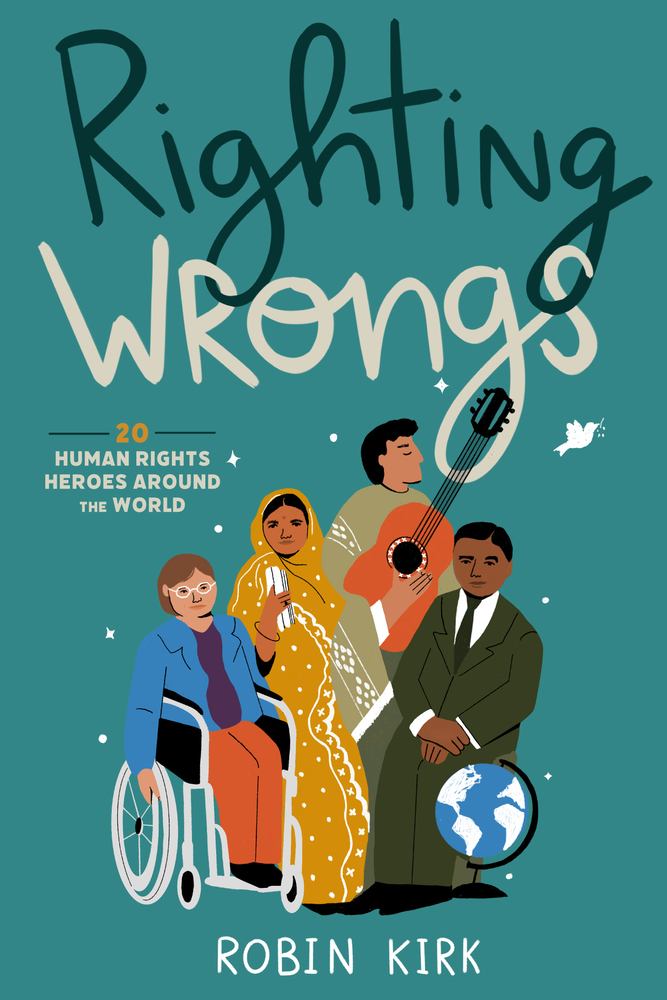When I lived in Peru, I often wondered what the land had looked like before Europeans carried out a brutal conquest. Peru’s desert coast lifts abruptly into the Andes mountains in dizzyingly steep peaks and canyons. Further east, the mountains plunge into the green immensity of the Amazon jungle.
Preconquest, as many as 14 million people lived under Inca rule in Peru. The Inca empire was prosperous, with stone roads and bridges linking cities and towns. A vast network of irrigation canals watered crops no European would recognize: potatoes, tomatoes, hot peppers, quinoa, and corn. Herds of camel-like llama and vicuña roamed the high plains and were used for their wool and meat and as beasts of burden. In the cities, massive temples of closely fitted stone rose over prosperous streets. Inside, images of gods made of gold gleamed in torchlight.
All of that began to change when Christopher Columbus made landfall in the Americas in 1492. He’d been looking for a route to the spices and silks of the Far East. Instead, his arrival marked devastation for Indigenous peoples and spectacular profits for many Europeans, who immediately began to exploit the so-called New World for its riches.
Along with horses, guns, and religion, the Europeans brought new diseases that spread far beyond their ships. In what is now modern-day Peru, a mysterious “delirious fever”-possibly smallpox -killed the Inca king sometime between 1525 and 1527. Two of his sons fought to replace him. One, Atahualpa, had just defeated his brother in battle when Spanish adventurer Francisco Pizarro landed near the modern town of Tumbes in 1532.
News of the Spaniards’ arrival reached Atahualpa as he rested at the town of Cajamarca. Curious, he invited them to his court. He wasn’t afraid. After all, thousands of loyal, armed, battle-hardened soldiers protected him. His spies reported that the strangers had just 110 infantrymen, 67 cavalrymen (and their horses, a curiosity), 3 guns, and 2 small cannons.
But as Atahualpa arrived to greet them in Cajamarca’s central square, the Spaniards launched a desperate ambush. In a matter of hours, Pizarro and his men slaughtered hundreds of Atahualpa’s soldiers. And they seized the Inca king himself, demanding gold as ransom for sparing his life.
For weeks, the terrified people piled up all the gold they could collect. But Pizarro had lied about his intentions. On August 29, 1533, he ordered Atahualpa executed. He wanted the Inca empire for himself and for Spain.
The Inca were no strangers to conquest. Like European monarchs, they believed conquest was a divine right. Over the previous centuries, the Inca had conquered dozens of smaller groups, demanding payments and obedience in return for sparing their lives. Some Indigenous Peruvians helped Pizarro as a way of freeing themselves from Inca oppression.
But there the similarities between Inca conquest and Spanish conquest end. Europeans had a very different view of what conquest meant. Indigenous communities that had farmed shared plots for generations soon learned that the Spanish king-who never even visited the Americas-suddenly owned their land. Farmers owed him and his nobles not only their labor but also most of what they mined, harvested, or grew.
Unscrupulous foreigners killed and raped without any fear of punishment. No longer could Indigenous people worship their own gods. The Catholic priests who accompanied the conquistadores forcibly converted thousands, often at sword point, and outlawed any vestige of traditional faith upon pain of death.
Most Europeans would not have found anything strange about the conquest of the Americas. Tales of seizing the lands of others, enslaving them, exterminating their beliefs, and looting their belongings had filled Europe’s history books for centuries.
But just because something is normal or expected doesn’t make it right. Shockingly-amazingly, miraculously-some people raised their voices to protest what was happening to Indigenous America. Two men-one a Spanish priest and the other an Indigenous writer and artist-spoke powerfully about the injustices of the conquest and the rights of Indigenous people. Then both of them did something to translate their beliefs into action.
To be sure, this wasn’t the first time someone had questioned violence against others or tried to advance the idea of rights. I highlight this moment for what it teaches about the human rights heroes I profile in these pages. In essence, human rights are rooted in the constant human debate over what is right and what is wrong. The heroes in these pages perceived a wrong that few others recognized. Then they worked to convince others to respect an oppressed group’s human rights.
Human rights are never fixed, in other words. There is always a new way of thinking about rights that advances protections to people -or animals or the earth itself-and improves life for all.
Comprehension Questions
1. What was the result of Christopher Columbus's arrival in the Americas?
A. Devastation for Indigenous peoples
B. Europeans got poorer
C. There were less diseases
A. They are fixed
B. There is always a new way of thinking
C. There is no hope
Your Thoughts
Vocabulary
4. List any vocabulary words below.

